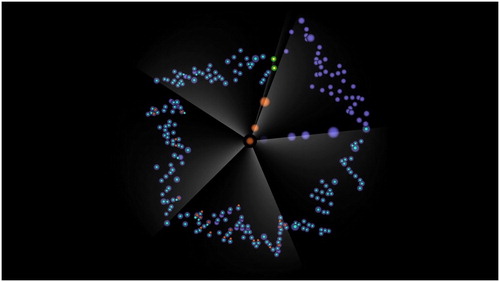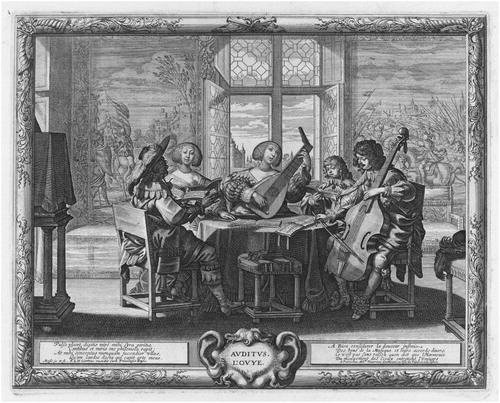Figures & data
Figure 1. A still from Stephen Malinowski’s visualization of Bach’s canon at the twelfth from The Art of Fugue (<https://www.youtube.com/watch?v=GhQK4GeqHbA>, accessed 22 December 2017). Reproduced by permission. A full colour reproduction of this figure is available in the online edition of JRMA. The coloured dots represent the melodic voices: each transposition has its own colour, and so the changing colours of the dots make clear the canonical structure. The ‘spokes’ turn counter-clockwise and on them the different entries of voices appear before they follow the canonic melody.

Figure 2. Abraham Bosse, Auditus or L’ouye (Hearing). Amsterdam, Rijksmuseum. Van Orden points out the close coordination and conviviality depicted here by comparing it to a ‘card game in which players constantly judge each other’s hands, for no one can see how all the parts fit together from his or her own part book’. Kate van Orden, Materialities: Books, Readers, and the Chanson in Sixteenth-Century Europe (Oxford: Oxford University Press, 2015), 6.

Figure 3. Tomas Schmit, Typewriter Poem, 1963. New York, Museum of Modern Art (<https://www.moma.org/collection/works/136670>).

